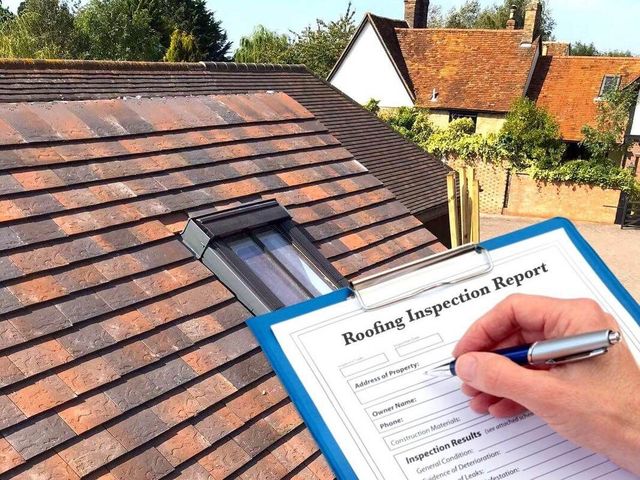Storm Damage? Hail? Leaks? Get a Roof Inspection Austin TX to Ensure Your Home is Safe
Storm Damage? Hail? Leaks? Get a Roof Inspection Austin TX to Ensure Your Home is Safe
Blog Article
The Crucial Guide to Roof Evaluation: Securing Your Home Versus Typical Damages
Routine roof examinations are a vital component of home upkeep that can avoid small issues from rising into substantial problems. As we discover the common indicators of roofing system damages and effective upkeep strategies, it ends up being evident that a positive approach is necessary for safeguarding your financial investment.
Importance of Routine Roof Covering Evaluations
Normal roof assessments are crucial for preserving the honesty of a building's structure. These examinations work as a positive action to identify prospective concerns prior to they escalate into expensive fixings or considerable damages. By performing routine assessments, residential property proprietors can guarantee that their roofings stay in optimum condition, therefore prolonging their life-span.
Throughout these evaluations, different aspects are examined, consisting of the problem of tiles, blinking, and water drainage systems. Additionally, the presence of debris, moss, or algae can be spotted, enabling timely remediation. Dealing with minor concerns at an early stage can avoid much more substantial issues, such as leaks or structural deterioration, which may endanger the safety of the building.
Moreover, regular roof covering examinations add to energy efficiency. A well-maintained roof decreases warmth loss throughout colder months and reduces the pressure on home heating and cooling systems. This, in turn, can bring about reduced utility bills and a lowered carbon impact.
Typical Signs of Roof Covering Damages
Identifying typical indicators of roofing damages is vital for home owners to maintain the safety and security and longevity of their residential property. These conditions can jeopardize the roof covering's integrity, leading to leaks and more deterioration.
One more essential sign is water spots on ceilings or wall surfaces inside the home, which often suggest leakages stemming from the roof. Property owners must additionally inspect for mold or mildew development, as these can grow in wet conditions caused by roofing leakages.
Blinking around smokeshafts and vents should be looked for rust or damage, as malfunctioning blinking can allow water to penetrate the roofing system structure. Lastly, drooping locations on the roofing surface area might recommend architectural concerns, necessitating prompt focus. By recognizing these indications early, home owners can take positive measures to deal with roof covering damage, ultimately protecting their home from expensive repair services and making sure a long lasting roof system.
Seasonal Roofing System Maintenance Tips
Recognizing the indicators of roof covering damages is just the primary step in making certain the durability of your roof; ongoing upkeep is similarly essential. Seasonal roof upkeep is vital to not only extend the life of your roof covering yet likewise to stop pricey repair services down the line.
During springtime, check your roof for any kind of indications of winter damages, such as broken tiles or displaced flashing. Tidy rain gutters and downspouts to ensure correct drain. In summer season, check for moss or algae development, and think about using a protective sealer to stop moisture build-up.
As fall techniques, remove leaves and particles from your roofing system and seamless gutters. This will aid reduce the threat of water pooling and prospective leakages. It's also an excellent time to analyze the roofing system for any type of signs of wear, such as loose tiles or rusted flashing.
Do It Yourself Roof Covering Inspection Checklist
An extensive do it yourself roofing examination list is essential for homeowners looking to maintain the integrity of their roof system. Begin by analyzing the roofing system surface for any type of visible signs of damage, such as missing, cracked, or crinkling tiles - Roof Inspection Austin. Pay close attention to locations around skylights, chimneys, and vents, as these prevail leakage factors

Relocating to the inside, examine the attic room for signs of water invasion, such as discolorations or mold development. Ensure appropriate air flow to avoid moisture accumulation, which can lead to degeneration.
When to Employ a Specialist,##.
While numerous house owners can perform basic roofing system assessments, particular circumstances require the experience of a professional. If you spot considerable damages, such as click to read more big missing out on tiles, noticeable sagging, or water discolorations on the ceiling, it is essential to seek advice from a certified roofer. These concerns might show underlying architectural troubles that call for prompt focus.
Additionally, if your roof is nearing the end of its anticipated life-span-- commonly 20 to 25 years for asphalt tiles-- it is smart to have a specialist analysis. Experienced assessors can analyze the roofing's condition and supply educated recommendations on repair or replacement.
Extreme climate events, such as hailstorms or heavy winds, also demand expert examination. If left untreated, even minor damages can lead to considerable complications. Furthermore, if you're taking into consideration selling a building or getting, a professional inspection can reveal prospective issues that might affect the purchase.
Conclusion
Routine roof assessments are vital for preserving the integrity of property structures. Aggressive assessments allow the very early identification of prospective concerns, thus making sure and protecting against costly repair work power performance. By adhering to seasonal maintenance ideas and making use of an extensive DIY list, home owners can effectively monitor their roofing systems. The competence of an expert must not be forgotten, specifically when substantial damages is believed. Focusing on roof covering examinations inevitably adds to a secure and safe and secure living setting.

Throughout springtime, inspect your roofing system for any type of indications of winter months damages, such as cracked shingles or displaced flashing. Begin by analyzing the roofing surface area for any type of noticeable indicators of damages, such as missing out on, fractured, or crinkling shingles.
Report this page